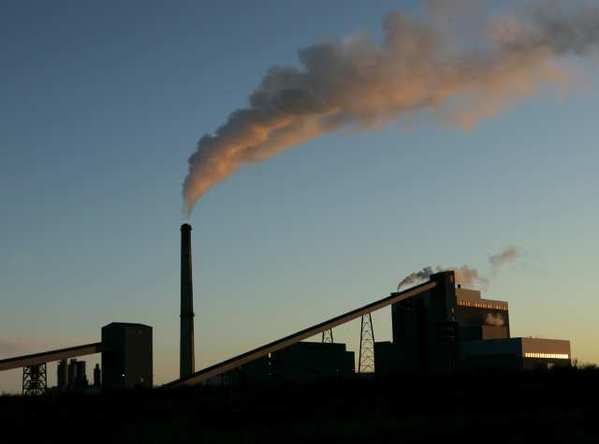Dirty but essential, that’s coal – ‘There’s no end to the coal here’
[cf. Earth’s greatest mass extinction caused by coal: study] By Robert Bryce
27 July 2012 Standing in the dispatch office of the North Antelope Rochelle Mine near Gillette, Wyo., Scott Durgin pointed at a flat-panel display. The regional vice president for Peabody Energy smiled. The most productive coal mine in the world was on target. Since midnight, about one train an hour had been loaded, each carrying about 16,000 tons of coal. I asked Durgin how long Peabody could continue mining in the region. Easily for five more decades, he replied. “There’s no end to the coal here.” The Peabody mine, along with the about 1,300 other coal mines in the U.S., is being threatened. The Environmental Protection Agency has proposed a rule that, if enacted, would in effect outlaw the construction of new coal-fired power plants in the United States. The EPA’s motives are clear: It wants to shut down coal plants, which emit lots of carbon dioxide. But the EPA and the Obama administration know their attack on coal is little more than a token gesture. The rest of the world will continue to burn coal, and lots of it. Reducing the use of coal in the U.S. may force Americans to pay higher prices for electricity, but it will have nearly no effect on climate change. There’s no denying that coal has earned its reputation as a relatively dirty fuel. On one particularly nasty day in London in 1812, a combination of coal smoke and fog became so dense that, according to one report, “for the greater part of the day it was impossible to read or write at a window without artificial light.” About 200 years later, the New York Times reported that in Datong, China, known as the City of Coal, the air pollution on some winter days is so bad that “even during the daytime, people drive with their lights on.” Air pollution is only part of the coal industry’s toll. It damages the Earth’s surface with strip mines, mountaintop removal and ash ponds at power plants. In addition, thousands of workers die each year in coal mines. But U.S. policymakers are mostly focused on carbon dioxide. The proposed EPA rule would cap the amount of CO2 that new fossil-fuel electricity generation units could emit at 1,000 pounds per megawatt-hour. Absent “carbon capture and storage,” a process that isn’t commercially viable, that standard will rule out coal-fired units, which emit about 1,800 pounds of CO2 per megawatt-hour. (Natural gas units emit about 800 pounds per megawatt-hour.) Prohibiting new coal-fired power plants may please President Obama’s domestic supporters, but it would leave global coal demand and CO2 emissions almost unchanged. Indeed, over the last decade, even if CO2 emissions in the U.S. had fallen to zero, global emissions still would have increased. Consider Vietnam, where electricity use increased by 227% from 2001 to 2010. Its coal demand jumped by 175% during the same period, and it had the world’s fastest percentage growth in CO2 emissions. Meanwhile, China has about 650,000 megawatts of coal-fired electricity generation capacity (more than twice the capacity in the U.S.), and it plans to build an additional 273,000 megawatts of coal-fired capacity. Those numbers help explain this fact: Over the last decade, global coal consumption has increased by more than the growth in oil, natural gas and hydro and nuclear power combined. We needn’t look only at developing countries to see the essential role of coal. After the disaster at Japan’s Fukushima nuclear power plant, Germany is rushing to shutter its reactors. Although renewable-energy projects are the darling of European politicians, nearly 14,000 of the 36,000 megawatts of new electricity generation capacity that will be built in Germany over the next few years probably will be coal-fired facilities. Coal is helping meet the world’s electricity demands for a simple reason: It’s cheap, thanks to the fact that deposits are abundant, widely dispersed, easily mined and not controlled by any OPEC-like cartels. According to the U.S. Department of Energy, from 1999 through 2010, coal cost about half as much per BTU as the next cheapest fuel, natural gas. […]

haha, you should be at RAMPS. King Coal has signs on every tacky trailor, saying STOP THE WAR ON COAL. And then they throw sticks, stones, pepper spray and shoot at you!!! Stay tuned to these delightful exampes of homo sapiens are revealed.